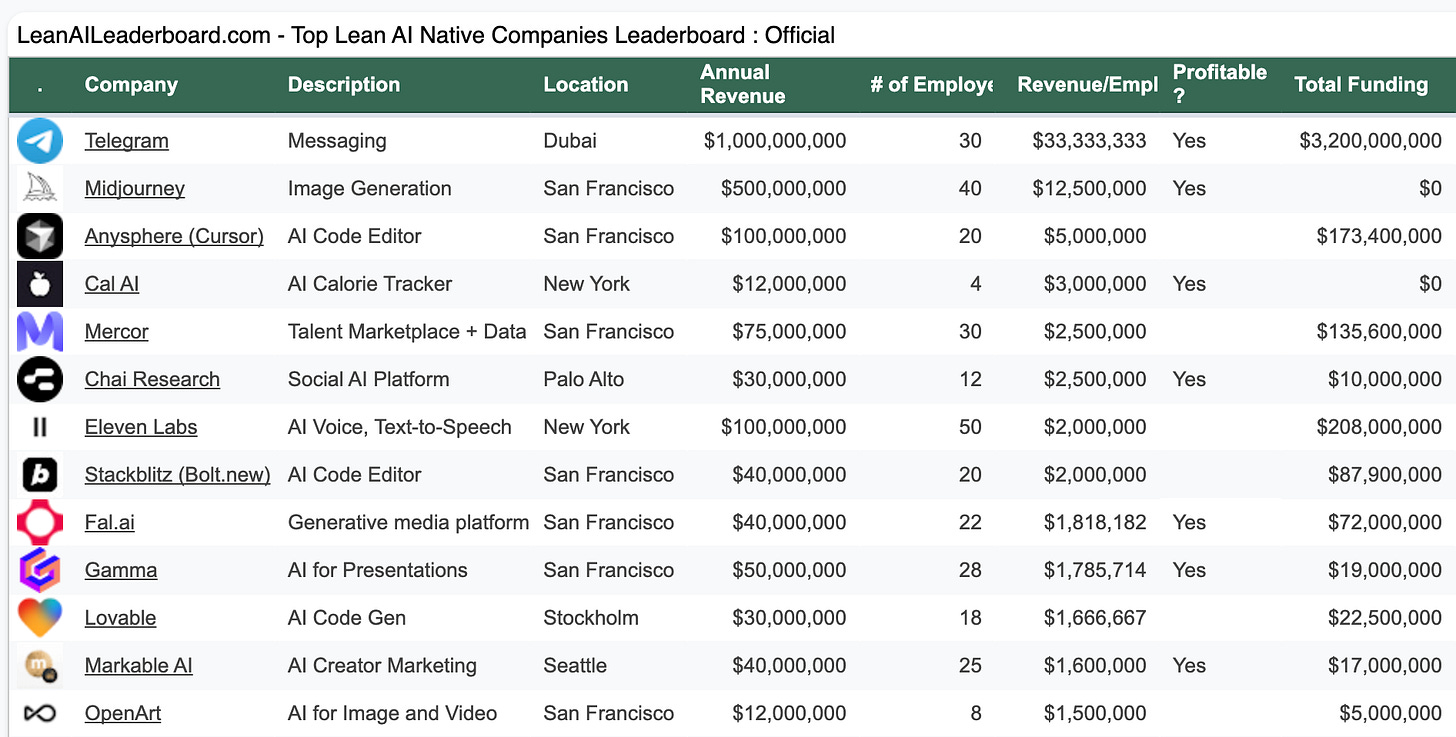Seedstrapping 101: Build, validate and grow on your terms
In 2025 you don't need venture capital to build your startup
Most founders are told they have two options: raise venture capital or bootstrap.
In 2025, it’s increasingly clear there’s a smarter third path – and most founders aren’t hearing about it.
And meanwhile the startup ecosystem is quietly failing many of our talented and ambitious founders.
The message we inadvertently send is subtle but clear: if your goal isn’t raising lots of money and aiming for a multi billion-dollar valuation, then there’s no support, no funding – maybe even no point in starting at all.
Here’s just one way that message is reinforced:
To get accepted into the majority of accelerator programmes, you must pitch a startup that looks like a good candidate for venture capital.
You don’t need millions to know if it works – just a few paying customers.
That means you must have already designed your strategy to suit VC’s definition of success – ultra fast growth, massive scale, and a likely exit within 10 years. Or blow the company up trying.
And if your product, market, or personal goals don’t fit that mould? The rejections can feel like your startup isn’t viable – when really, it just means venture capital isn’t the right fit.
There are options beyond just bootstrapping or VC
It’s not just venture capital that has its limitations, bootstrapping – building with your own money and time – doesn’t work for every founder or every product either.
There’s a third path: seedstrapping.
Seedstrapping = raising just enough capital to validate, grow, and stay in control.
Seedstrapping is a funding strategy for founders building businesses that don’t require massive early investment to generate revenue or profit. It’s about using just enough capital, raised from aligned supporters, to validate, grow, and stay in control.
Why I’m personally excited about seedstrapping
I first heard the term described on a panel at a Rare Founders event in London – and it immediately clicked with my experience and beliefs.
Here are a few common founder problems that seedstrapping helps solve:
Trying to ‘look VC-ready’ too early, with insufficient focus on generating revenue
Successfully raising VC, only to face pressure to grow at all costs and take unnecessary risks
Misaligned incentives between founders, angels, and VCs – especially when preference shares leave founders and early investors with nothing, even in high-value exits
How AI makes capital-efficient startups even more possible
Historically, there were two big costs in building a startup:
Building the product
Acquiring customers
Both required expensive teams and deep expertise.
But now? Generative AI is changing that.
From my own experiments – and conversations with founders and CTOs – it’s clear that those who develop the right skills are moving faster, validating more cheaply, and getting early traction without hiring big teams.
This means: you might need far less capital to reach early profitability than before. And that opens the door to becoming self-sustaining – on your terms.
The seedstrapping path (step-by-step)
Here’s how I break down the early stages of the seedstrapping journey:
Step 1: Validate your product
Use Lean Startup experiments to prove out early methods for acquiring customers and delivering value to them. Typically this will be a successful marketing experiment and a Minimum Viable Product that shows strong potential. This will often take multiple attempts but that’s fine, that’s the process; each attempt builds skills and insights.
Step 2: Prove you can earn early
Generate some early revenue to prove that you and your strategy are a good fit for a capital-light approach. This doesn’t need to be revenue from your ultimate product as that might not be possible yet. But it should show that you can get your target customer to pay you and that you can start getting income to cover your costs - already reducing your reliance on outside capital.
Step 3: Ask yourself if you need to raise at all
Maybe you don’t need outside funding and you can bootstrap from here - retaining ownership of the whole company. Maybe you take on commercial debt later down the line, ultimately cheaper than ‘forever’ equity investors. Or maybe you decide to raise from aligned angel investors and non-venture capital funds.
Step 4: Raise lean, strategic capital if necessary
If you do raise, do it on your terms. Small, efficient rounds from “seedstrapping-friendly” angels who understand your strategy. Less dilution, more control, and more time spent with customers – not investors.
Step 5: Build, grow, and explore exits (or not)
A venture-backed startup would typically aim to grow very big, very quickly and then either be acquired or undertake an Initial Public Offering (IPO) - ideally within the typical ten year lifecycle of a VC fund.
Similarly for an angel investor to get a return on their seedstrapping investment then they need to sell their shares to someone at some point!
Seedstrapped businesses and their investors can also explore alternative models:
Dividends or profit-sharing agreements (like Calm Company Fund’s Shared Earnings Agreements)
New private secondary markets (like the UK’s proposed PISCES platform)
The biggest funding risk?
Raising money before you’ve proven what works.
Real examples of successful seedstrapped startups
Zapier – raised $1.3m and never raised again, 2021 valuation $5bn+
Mailchimp – sold for $12bn and didn’t raise VC
The hundreds of profitable businesses sold on platforms like Acquire.com
A leaderboard of Lean AI companies with more than $5m in revenue

Ready to build on your terms?
Subscribe for weekly seedstrapping tactics – or follow me on LinkedIn to see them first.
What’s next: some of the seedstrapping topics I’ll be exploring in this series
How do I know if seedstrapping is right for my product and my market?
Who seedstrapping does (and doesn’t) work for.From interest to income:
How to validate with early customers, not opinions.Getting paid early:
Generating cash before your product is finished.What do angel investor returns really look like without a VC exit?
What an angel syndicate focused on seedstrapping startups could look like.Market sizing for founders:
How to check what is ‘big enough’ beyond the typical venture capital models.Alternative funding models:
From revenue-based finance to aligned angel investment.Founder support programmes:
How can an IfWeRaise Growth Pod help founders along this path?Tools to save time and increase speed:
From cashflow forecasting to market sizing - move faster down the seedstrapping path.






This makes so much sense. It's hard to get good stats but 80% of successful businesses never went for investment.
And I love 'seedstrapping' as a term!